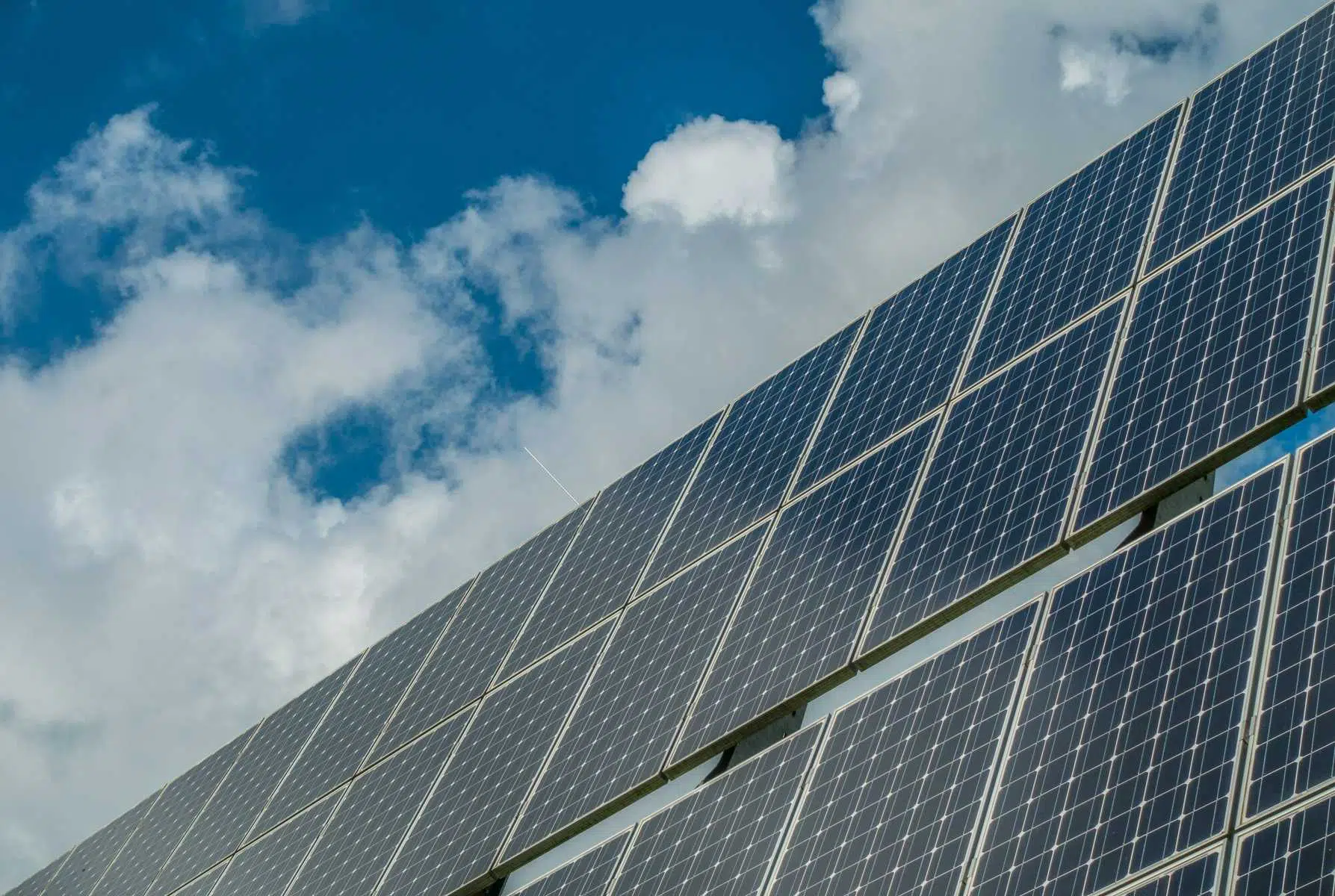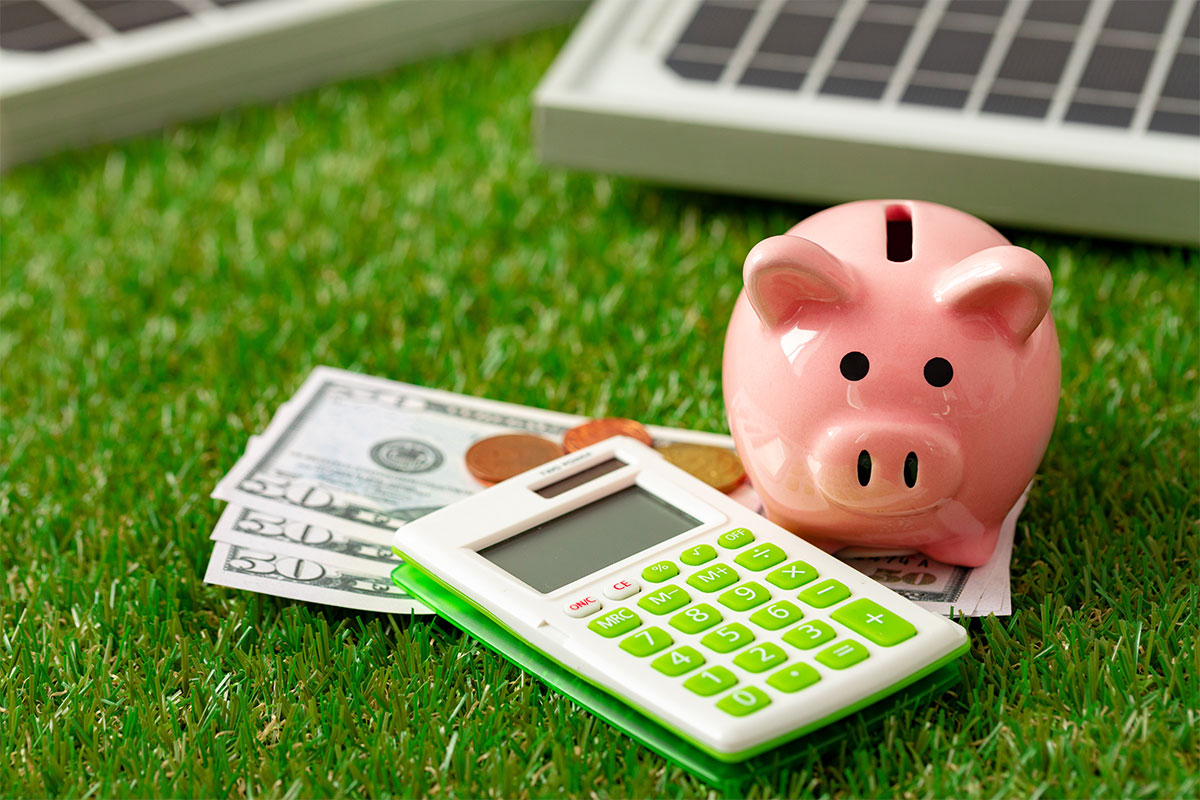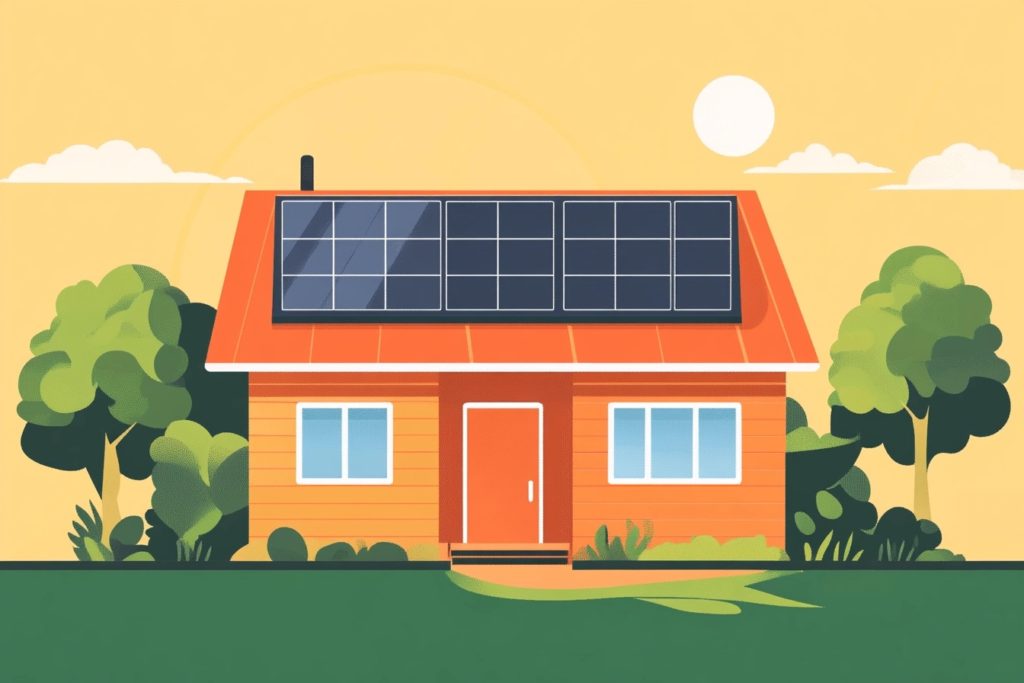The world is power-hungry and energy demands are steadily rising. According to a solar panel news report from this month, the U.S. Energy Information Administration (EIA) projects that the world will require 50% more electricity by 2050 and that renewables will account for most new power consumption globally.
The main factors driving solar power as a preferred energy source are climate change based regulations, incentives, and falling costs in solar installations.
Are you on the fence about making the leap to residential or business solar power for your energy needs? Going solar is a big step but one that may very well be the wisest decision you can make.
In this post, we will cover the latest in solar panel news. Follow along as we explore the exciting developments in the industry that are leading millions of people to energy independence.
Solar Panel News for October 2021
Solar energy is continually increasing in popularity. Encouraging the use of renewable energy is also high on the agenda for governments seeking to meet their targets with regard to the fight against climate change.
With this in mind, there are constant changes occurring in the solar industry, many of which have a knock-on effect on consumers. Let’s take a look at what’s been happening this month in solar news.
Solar Installations On 50% of Rooftops Are Needed to Power the World
A recent paper published on Nature Communications predicts that 100% of the world’s annual power needs could be met if 50% of the world’s rooftops had solar PV installations.
Further to this, three hot spots for solar production were highlighted; North America, Europe, and Asia.
The report goes on to find that solar power has the potential to help reduce energy poverty by putting the means of production into the hands of homeowners throughout the world.
Illinois Clean Energy Bill Means Massive Savings On Solar
The end of last month saw Illionois’ massive Clean Energy Bill being signed into law. The bill seeks to have a million electric cars on the road, and an end to the use of fossil fuels in energy production by the year 2050.
The bill ushers in a raft of savings for green consumers with savings on electric cars and solar panels, as well as reduction in energy bills for those taking advantage of the community solar plan. It’s estimated that homeowners opting to get solar panels installed will save between $8,000 and $9,000.
These savings will be in addition to the already existing federal tax credit scheme which currently sits at 26% of the cost of your installation.
It may still take several years for your solar electricity to completely repay the initial cost, but given that a solar panel system is designed to last for 25 years, looking at the long-term, you’ll enjoy free energy for many years to come.
IRENA Publishes Annual Renewable Energy and Jobs Review for 2020
The International Renewable Energy Agency (IRENA) has recently published the annual renewable energy and jobs report. The report estimates that there were 12 million people employed worldwide in the renewable energy industry, of which 4 million worked specifically within the solar PV market.
Although global sales of PV solar installations suffered due to the global COVID19 pandemic, layoffs in the sector were minimal. The report also notes that 2020 saw unparalleled growth in PV installations in the United States, despite the pandemic.
The report predicts that by 2050, there will be a total of 122 million renewable energy jobs globally.
Are Solar Panels Worth It?
For many people, getting home solar panels installed is a matter of environmental importance. The main benefit of having solar panels is that your household’s carbon footprint will be greatly reduced.
The average U.S home has a carbon footprint of 48 metric tonnes per year. By generating your own renewable source of energy, you’ll put a serious dent in the carbon emissions that your household is responsible for
But, of course, for the majority of households, getting solar panels installed represents a major financial commitment.
If you’re currently on the fence about switching to solar, you may be wondering are solar panels worth it? To decide whether solar is right for you, we’ll explore how much the average installation costs, the various types of solar panels that are available, and how much you’d be able to save through solar rebates and incentives.
How Much Are Solar Panels Today?
The national average price for a 5 kW residential system is between $15,000- $25,000. This figure is before any deductions such as the federal tax credit or any other rebate you may be entitled to in your state.
For any solar installation fitted before 2023, you’ll be entitled to a 26% rebate from the federal tax credit scheme. From 2023, this figure will drop to a 22% rebate.
In addition to this, many states operate their own initiatives and you may also be entitled to a rebate through your energy supplier. You may also be interested to learn about any net metering schemes that operate in your state too. This is where you sell any excess energy that you produce to your energy provider in exchange for credits.
The specific cost of solar panels for your home will be dependant on several factors, most notably, how much energy you currently consume. The amount of electricity you use will determine the size of installation that you’ll need.
Of course, energy consumption varies from household to household, the best place to start will be to look at your previous energy bills. You’ll also need to know how much sunlight you get in your area.
Other factors to consider include the size of the solar panels and the efficiency of the panels you opt for.
The best way to get a true understanding of the potential cost of solar panels for your home is to schedule a consultation where a proper estimate can be put together.
More Variety: Types of Solar Panels
With installing the means to generate your own electricity being a major long-term investment, you’ll need to be sure that you’re getting the best solar panels available. But what types of solar panels are there?
Most PV solar panels are made using polycrystalline silicon or monocrystalline silicon, with monocrystalline silicon being the most popular and the most efficient option. This is the same material that silicon computer chips are made out of.
The issue with monocrystalline silicon is that it’s not cheap. That said, the prices of solar panels have dramatically decreased in recent years.
With both polycrystalline and monocrystalline silicon, you have the option to purchase a Passivated Emitter Rear Cell (PERC) which is an additional layer of silicon that stops electrons from getting trapped, making your solar panels more efficient.
Whichever solar panel material you choose, you’ll still be helping the environment and saving money in the process.
Maintaining a Solar System
With solar panels being a serious commitment, you may be wondering how much work is involved in the upkeep of your solar installation. Thankfully, keeping your solar panels in great working order doesn’t require too much effort.
Because solar panels work best when they’re in direct sunlight, you’ll want to make sure that any trees that surround your home don’t start to overshadow your panels.
You will need to make sure your solar panels are kept nice and clean. Debris and dirt could affect their efficiency. With this in mind, cleaning your panels often is essential.
You may find cleaning companies in your area that offer solar panel services, or you might want to have a cleaning system installed to make the job easier.
If you choose to undertake the cleaning yourself, use a long-handled wiper along with biodegradable soap to clean the panels from ground level to ensure you don’t injure yourself or damage your panels.
Because solar panels have no moving parts, you won’t have to worry about anything rusting or seizing up. This means that there’s no need to worry about having your solar panels serviced or maintained.
Join the Renewable Energy Revolution Today
There truly has never been a better time to switch to solar. With new incentives launching all the time, and a shift in the global commitment to using renewable energy sources such as solar, is it time you made the switch?
If you’re ready to enjoy energy independence while helping save the planet, fill in this form and we’ll be in touch to help you on your solar journey.
With exciting solar panel news updates happening every day, check back next month to see what’s happening in the ever-evolving world of PV technology.
In the first quarter of 2021, America made the investment of inserting 5 GWdc (gigawatts, direct current) of solar capacity throughout the nation.
To put that into perspective, that is enough energy to supply roughly 18.6 million American homes with power.
Annually, hundreds of thousands of panels are installed across the country, leaving both businesses and homeowners delighted with energy savings.
These installations aren’t just in solar farms or on the buildings of tech companies, but on the homes of regular everyday Americans.
Many people are turning to solar panels because of the plethora of advantages they provide. Therefore, if you’re looking for a solar panel installation company so you too can get in on the action, then keep reading.
The Benefits of Solar Panels on Your Home
Some people are still in the dark, asking themselves, “Are solar panels worth it?” And the truth is, there are many benefits to having solar panels installed on our homes.
Some of these benefits are clear and obvious, and others are a little more subtle. Let’s look at a few of them here, so we’re a little more certain of some of these advantages.
1. Reduced Carbon Footprint
With climate change and global warming accelerating every year, solar panels are an effective way for all of us to do our part. It’s clear that we as a society, collectively, have to cooperate and be adaptable.
Solar panels can reduce carbon emissions by as much as 5 to 10 times per module of energy compared to the alternatives (natural gas and coal).
That’s an astonishing amount that perfectly illustrates how solar panels are a cut above our traditional methods of power usage.
Introducing this solar investment could change everything and get us on the right track as a society.
2. Lower Energy Bills
Depending on location, the cost savings of energy bills are going to vary. For example, living in Florida will yield lower energy bills than living in Alaska, for the obvious reason of the amount of sunlight that each state receives.
But even then, as long as panels are properly installed, we can still experience solar energy savings, regardless of the state we reside in — which is something we should all try to take advantage of.
Yes, sunny days will generate more power, and as a result, more savings. But solar panels will still continue to extract energy even when cloudy weather is imminent.
Earn Rebates and Tax Credits
The cost of solar is something that once we look into it, is well worth it. Because once installed, we actually get paid by our solar panels!
Being responsible has never sounded so good!
For starters, we receive 30 percent of the entire cost of the system back once federal income taxes are filed. What this entails is that if we spend $30,000 on a solar panel installation, then we’ll get back $9000 in return.
This along with the SREC (Solar Renewable Energy Credits) and the expense of installing solar panels can be reduced by as much as half.
Moreover, this investment has a graceful payback period of about three and a half years. The solar panels themselves retain a warranty of about 10 years and a functional life of an impressive 25 years.
This means it will produce free electricity, as well as additional credits for more than 20 years! Not bad, right? That’s the power of being self-sufficient!
Furthermore, if you can’t afford to make the initial investment, installers offer another option. There is what is referred to as no-cost installation.
They will front you the cash for the panels, install them, and then charge based on electricity usage at a lower rate. How convenient is that?
Begin Saving Immediately
When it comes to solar benefits, this is certainly one of the most appealing. Yearly energy expenses can jump up into the thousands.
In fact, the annual costs of the average American for energy consumption tops out at $3,891.
Solar power has the capacity to dispense with these costs the moment the panels are installed.
You can begin seeing your solar energy savings immediately and that is guaranteed to please everyone.
What Is The Cost of Solar Panels?
Many of us are left wondering, “How much are solar panels?” Sure, we understand the benefits, but how much do solar panels actually cost?
While installing prices certainly will require an upfront investment, it will more than pay for itself down the line.
Furthermore, the cost will also vary based on the solar panel installation company we choose, as well as other factors, such as our location, the size of our home, how many panels we want, etc.
But once it’s all said and done, the medium price for the installment of solar panels is about $12,000.
If that’s a bit of a stretch, there are also smaller systems that can be installed for as little as $5000. And on the other end of the spectrum, there are also more high-priced options that can be upwards of $50,000 or more.
So when it comes to the cost of solar, we definitely have options.
How Many Solar Panels Are Needed?
The answer to this question will be determined by the specific energy needs of your household. Many homeowners want the goal of being completely self-reliant for their energy needs.
Meaning, to have their panels produce enough energy where they no longer rely on a company or any external source to supply it for them.
To completely terminate the electric bill altogether, we would need to produce 100% of the electricity to sustain our needs and run our household. How ecstatic would that feel??
But in order to do that, it could take anywhere between 25 to 35 solar panels.
Of course, there are other variables that can affect this number. However, this is a good rough estimate.
For a more detailed analysis, we can use a satellite photo of the rooftop of our home to do a more reliable calculation.
Based on the square footage of our rooftop, it will be easy to see how many panels will fit, and therefore, we can get a more accurate number of exactly how many panels will be needed to achieve energy independence.
When we invest in solar, we take our lives — and our savings — to another level! This is how we secure our energy needs and create a more stable future.
Industry Updates on Solar Panels for the Month of September
Everything is changing at such a rapid pace these days, and the world of solar energy is no exception. The solar energy industry is constantly being inundated with a flood of technological advances and sudden changes.
Here are a few of the latest developments you’ll want to be up to date on:
Over 700 Solar Companies Requested Congress for a Long-Lasting ITC (Input Tax Credits) Extension (September.8/2021)
Close to 750 companies from the American solar supply chain sent letters to Congress asking for action on programs that promote clean energy distribution to assist in the fight against global warming.
This letter was a part of a campaign headed by SEIA (Solar Energy Industries Association) to bolster the revelatory solar and clean energy programs in the federal economic development constitution.
The ITC acts as the primary program driver for the American solar industry. The industry is now valued at over $25 billion and employs over 231,000 workers in valuable, in-demand jobs in every one of the 50 states.
September Solar Program Snapshots (9/7/2021)
A $1 trillion economic development bill was passed by the U.S. senate. The bill holds provisions for the storage of energy development, as well as power grid modifications.
All of which would be needed to enhance solar distribution. This bill is to make its way to the fine House of Representatives, where it may then be refused unless, of course, the Senate decides to pass a detached $3.5 trillion program bill come fall.
The Solar Panel International Event Canceled for 2021 (9/3/2021)
A statement was released on Friday, September 3, by SETS (Solar Energy Trade Shows) that the landfall of Hurricane Ida left officials no choice but to cancel Solar Power International. The event was set to go from September 20 to 23.
But unfortunately, the monstrous Hurricane had left a good portion of New Orleans without any power.
Additionally, the restoration of electricity is expected to be weeks, as the city is now declared a disaster zone.
Refunds will be issued via email with instructions about how attendees can be reimbursed for their ticket money.
Clearloop Starts Construction on Solar Project in Tennessee Financed by Small Businesses (9/2/2021)
The corporation of Clearloop is working hard alongside big as well as small businesses to minimize their carbon footprint. They are doing this by broadening access to pure energy and stimulating profitable development.
Every one of Clearloop’s allies in this venture will get carbon credits for backing their part of the undertaking.
Clearloop’s structure allows for smaller businesses to contribute a one-time payment that is directly connected to the amount of carbon they wish to reclaim.
Are You Ready to Choose Your Solar Panel Installation Company?
As you can see, this industry is continuously evolving and always growing with the times. Furthermore, solar energy is something that has tremendous advantages for all of us.
The benefits of solar are numerous and far-reaching, not just for us and our everyday lives, but also for the environment as well as the planet that we call home.
So if you’re looking to go solar, and need a reliable solar panel installation company, then look no further, get in touch with us for a free quote!
People are often surprised by the high costs when they install solar panels for their homes. After all, the price of the panels themselves is sometimes just the tip of the iceberg when it comes to how much residential solar power systems cost. Depending on where you live, which company you purchase your solar power system from, and other variables, you may have to make a significant investment that costs more than the actual solar panels themselves.
Why are solar panels so expensive? One of the reasons for the high costs is that solar installers sometimes bundle in other expenses to cover their marketing, labor, and overhead. You can avoid these high costs by comparing bids from multiple companies and choosing a company that keeps the additional charges to an absolute minimum.
The Condition of Your Roof Matters
However, we will note that sometimes these added costs are justified and necessary. For instance, the condition of your roof plays a significant role. If your roof requires any repairs, you’ll need to complete these before installing your solar panels. Furthermore, if you have a roof with an especially steep angle or several different levels, it can be much more difficult to install your panels as opposed to a structure with a “typical” roof.
Environmental Factors
Environmental factors like trees and landscaping can make an impact as well, as can the quality of the existing electrical wiring in your home. Making sure your roof is accessible and your electric system is up to code goes a long way toward mitigating these extra expenses.
Where You Live
There are many other variables that affect the cost of solar panels for the home. One of the most impactful factors is your location. Different parts of the country receive differing amounts of sunlight on a typical day, which can dramatically increase or decrease the efficiency of your solar installation.
Solar panels, in some parts of the Pacific Northwest, will only receive around four hours of direct sunlight per day, while some areas in the American Southwest get eight hours or more. The less direct sunlight your panels receive per day, the more panels you need to power your home.
Solar Panel Quality
Another variable is the quality of the solar panels you purchase. Of course, higher-quality panels will cost more up-front, and you can save quite a bit of money on initial setup costs if you opt for less durable panels. However, this is a double-edged sword. The money you save up-front on cheaper solar panels will likely come back to bite you in the long run, as those panels degrade faster than more expensive ones.
Solar Incentives Influence Overall Cost
Solar panels can also be much more expensive if you live in an area without sufficient solar incentives. The federal solar investment tax credit will expire in 2022, meaning the 22% deduction homeowners enjoy for solar installations in 2021 is on its way out. Beyond that, it all comes down to the solar incentives offered by your individual state, and those vary considerably depending on where you live.
Choosing to Buy or Lease Solar Panels
Whether you buy or lease your solar panels can play a major role in how much solar panels for your house cost. Buying your solar power system up-front requires a significantly higher initial investment, but it also means that you’ll enjoy more robust savings down the line.
LGCY Power Is Here to Help
As you can see, there are quite a few layers involved when answering the question of how much residential solar panels cost. If you need some help figuring out how much solar panels for your home will cost, feel free to contact one of our LGCY Power Energy Consultants at your convenience. Our expert representatives can walk you through every expense involved with residential solar panel installations to help you determine the most cost-effective plan for you.







